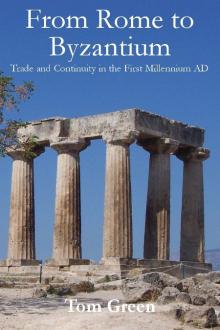From Rome to Byzantium
From Rome to Byzantium
Trade and Continuity in the First Millennium AD
'From Rome to Byzantium' provides a detailed overview of trading activity in the Roman and Byzantine Mediterranean, grounded in recent archaeological research. In particular, it is argued that while state-sponsored trading was undoubtedly important in both eras, 'free trading' led by consumer tastes and competition over prices must have played a significant role too. It is also contended that the so-called 'Dark Ages' of the seventh and eighth centuries saw more continuity with the Roman past in terms of both commercial activity and urban life than is often admitted. As such, the Byzantine economic and urban revival of the ninth century needs to be at least partly seen in the context of the 'legacy of Rome' and cannot be considered an entirely unrelated phenomenon, as it sometimes is.
Book Excerpt
from the second century). From the late fourth century this pattern changes once again, with a steady influx of eastern Mediterranean amphorae (Classes 43--46) into the west, dominating the trade across the whole of the Mediterranean (and into the Atlantic) until the seventh century. The exception to this seems to be North Africa and Italy, with African amphorae and their contents continuing to dominate the regional market in North Africa and also continuing to appear in large quantities in Italy, for example at Vibo Valentia, southern Italy, where eastern Mediterranean amphorae are rare but significant numbers of African amphorae are found into the seventh century. However, not even Carthage was immune, with eastern Mediterranean amphorae being found there from the late fourth century into the seventh century, something which tends to confirm the impression gained from the African Red Slip Ware industry that the Vandal conquest did not greatly disrupt trade, with eastern imports actually increasing through
Editor's choice
(view all)Popular books in History, Post-1930, Creative Commons
Readers reviews
0.0
LoginSign up
Be the first to review this book

 Free Download
Free Download























-itok=vcKIB5v1.jpg)
